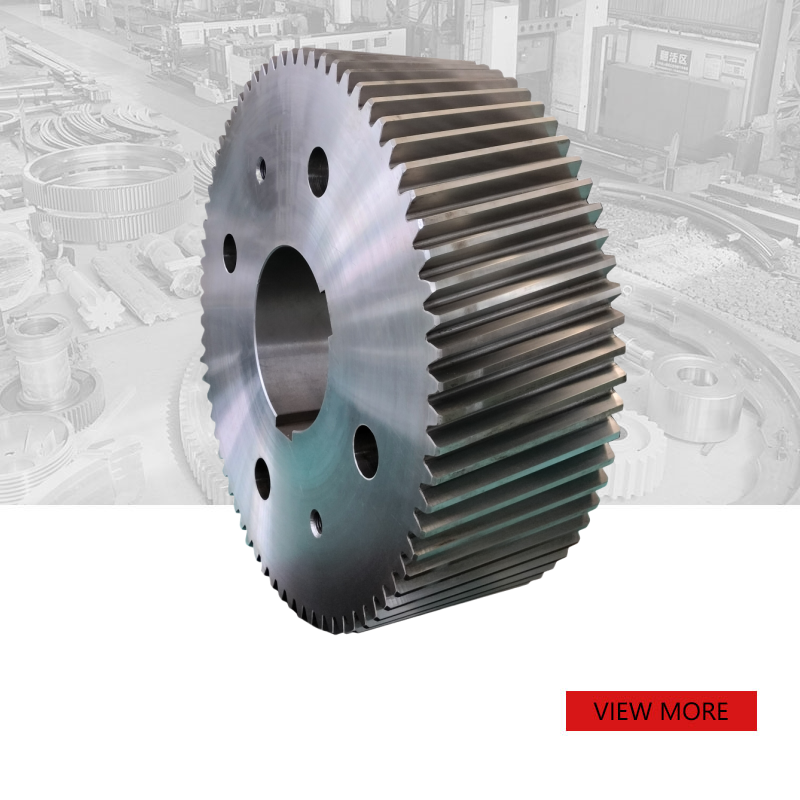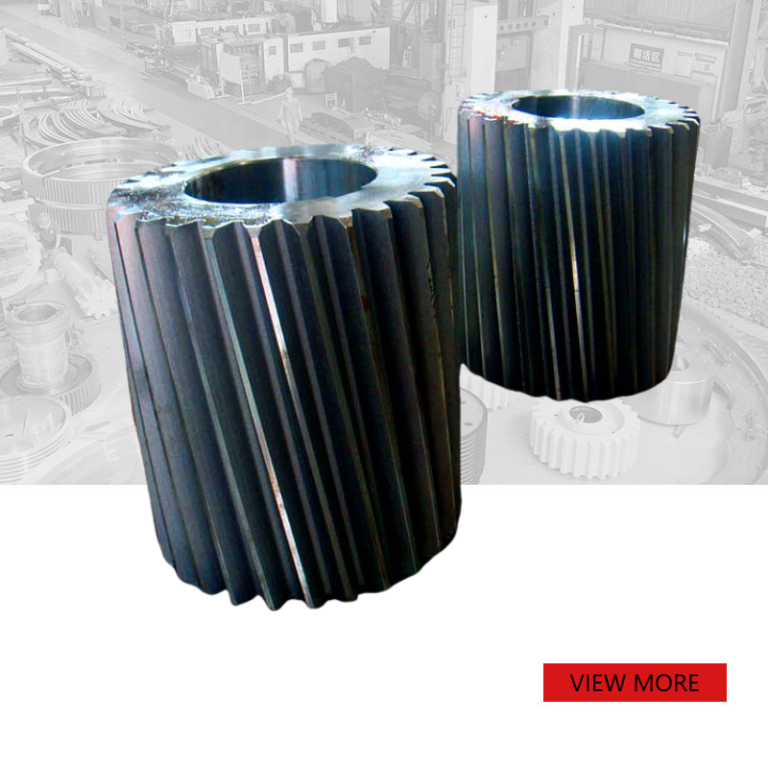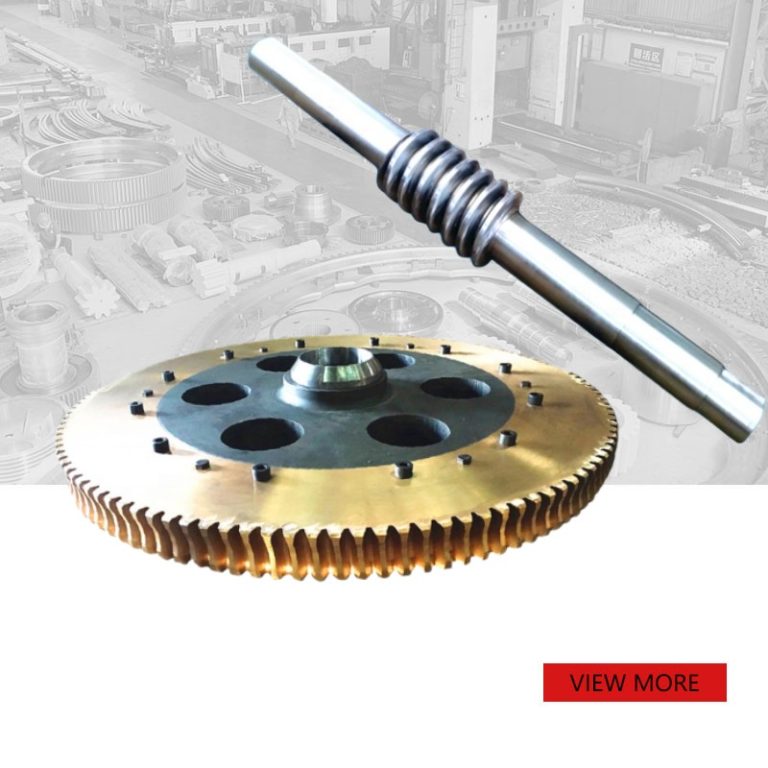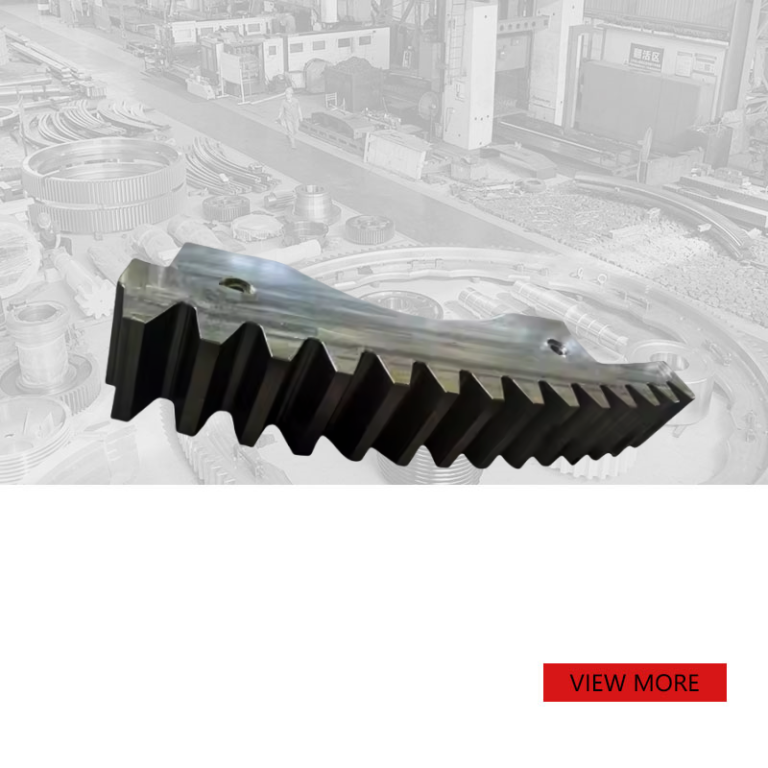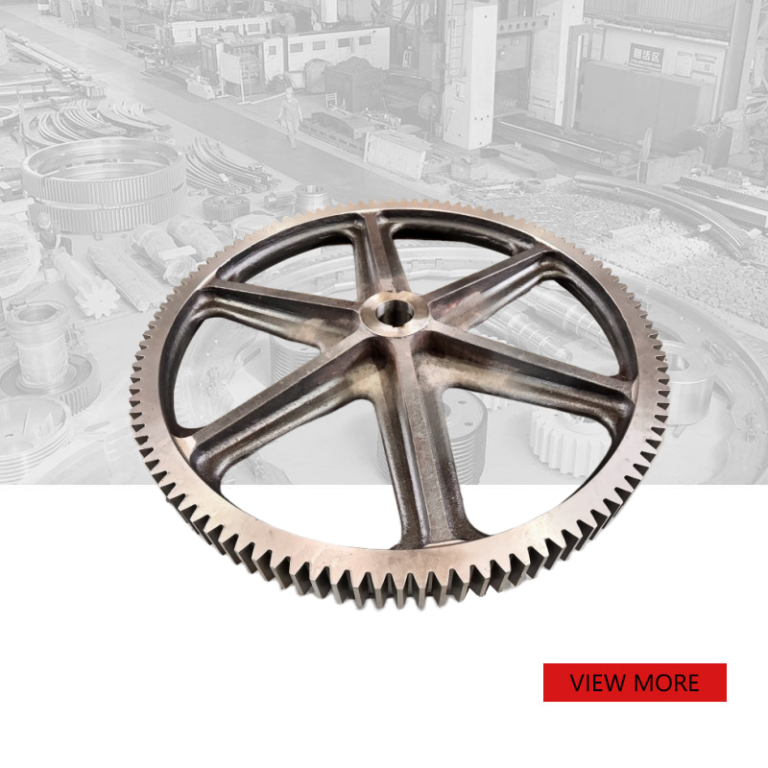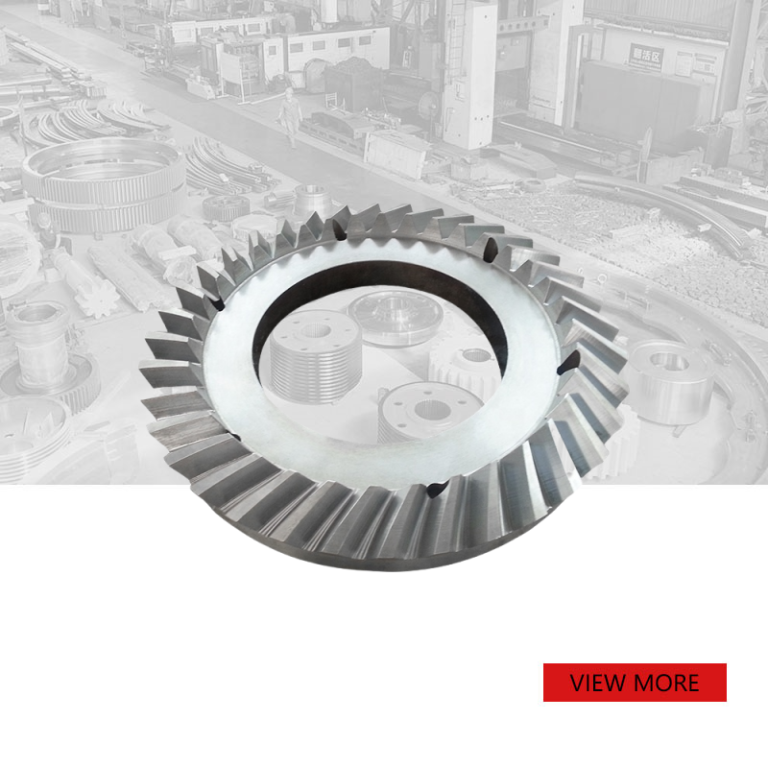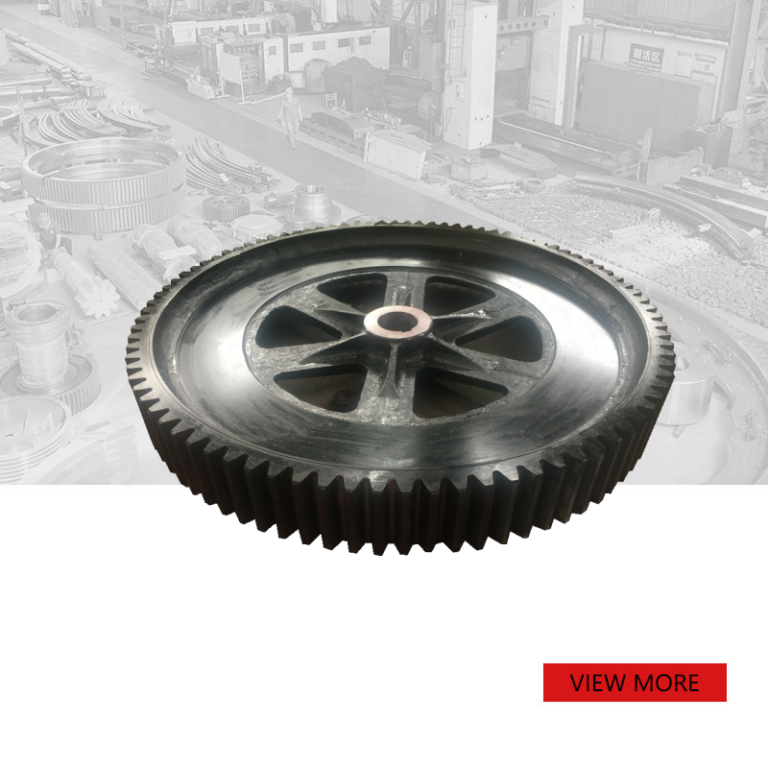
forged steel pinion helical gear
PRODUCT PARAMETERS
Description

Overview of Helical Gear
Helical Gear is a common mechanical transmission element. Unlike spur gears, helical gears have teeth that are inclined and spiral along the axis of the gear. Because helical gears provide smoother power transmission, they tend to have a longer service life than spur gears and reduce the need for wear and maintenance.
Production process of Helical Gear
The production process of Helical Gear is relatively complex, involving multiple steps and sophisticated manufacturing processes. The following is the general production process of helical gears:
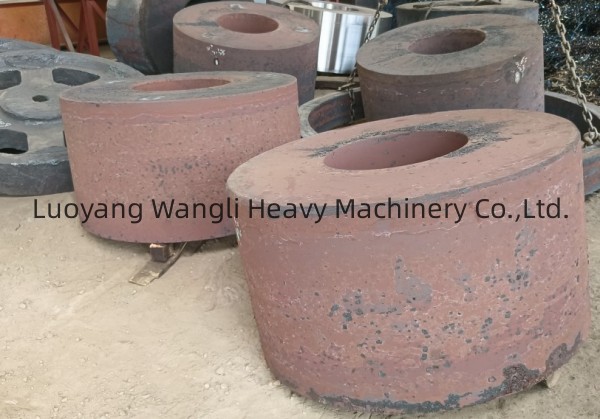
Blank preparation
– Blanks of gears are produced by forging, casting or powder metallurgy. The size and shape of the blank should be close to the requirements of the final gear to reduce the workload of subsequent processing.
Pre-processing
Preliminary turning or milling of the blank to form the approximate outer diameter, inner hole and other non-working face. This step also involves the removal of excess material in preparation for finishing.
Tooth shape processing :
Use specialized machine tools such as gear hobbing machine, gear shaper machine, gear grinding machine, etc., to produce accurate spiral tooth shape. This is one of the most critical parts of the entire production process.

Heat treatment
In order to increase the hardness and wear resistance of the gear, the gear is usually quenched, tempered or other forms of heat treatment. It should be noted that after heat treatment, minor finishing may be required again to restore dimensional accuracy.
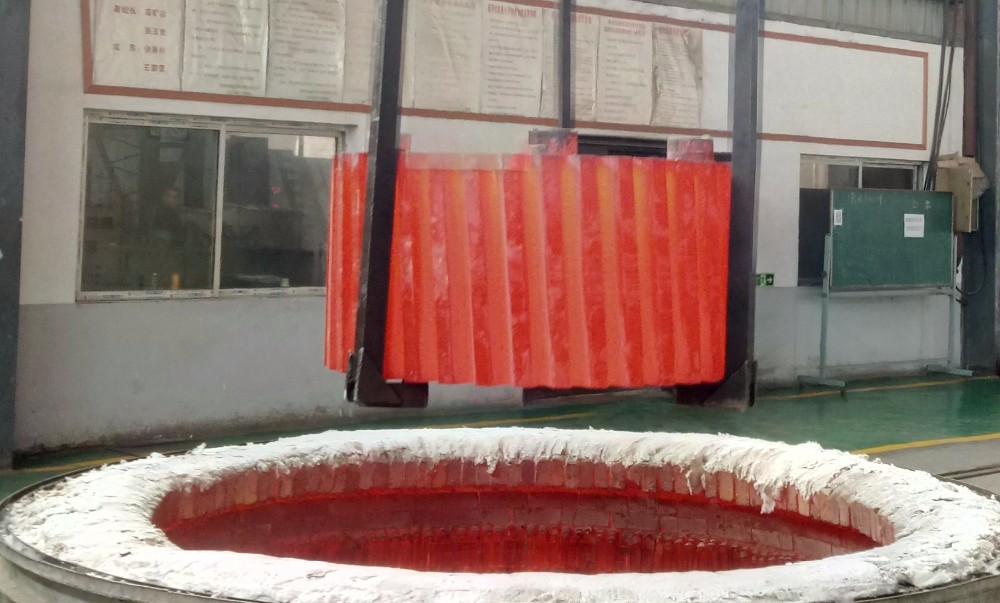
Finishing
Gears may be deformed after heat treatment, so they need to be finished to ensure the accuracy of tooth shape and size. This stage includes, but is not limited to, honing, grinding, or super finishing.
Inspection and Measurement
Use special measuring tools and instruments to check whether the parameters of the gear meet the design requirements, such as pitch errors, tooth profile errors, contact spots, etc.
Surface treatment
Optional step, depending on the application environment, coating, painting or other surface treatment of the gear to enhance corrosion resistance or improve appearance.
Package of Helical Gear
A fumigation-free plywood box is usually selected as the outer packaging container, and the appropriate packaging method is selected according to the gear size and weight.
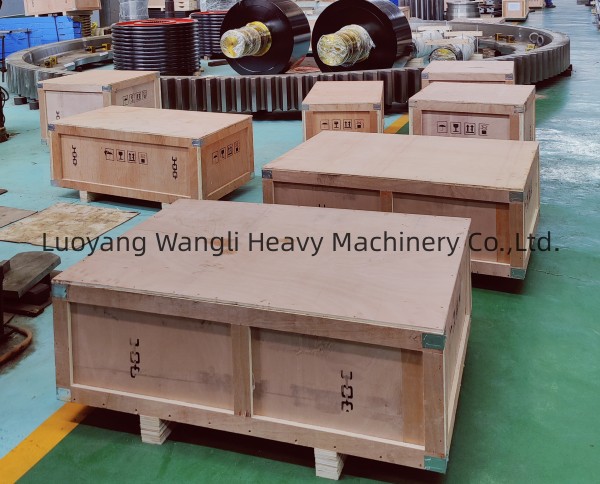
Application of helical gear in mining machinery
Our customized large helical gear wheel is mainly used for large cement plant equipments. Such as Rotary kiln,Ball Mill,Dryer,etc. Also we can produce other big forging or casting gear ring for steel plant,Dragline excavator.
Parameter Table of Helical Gear Shaft
| Material | Carbon Steel , Alloy Steel |
| Diameter | 1000-8000mm |
| Width | 200-1500mm |
| Module | 8-100 |
| Gear Grinding | MAX Module 25 |
| Heat Treatment | Q&T |
FAQs of Helical Gear
–Why is helical gear better than Helical gear?
–Helical gears have smoother operation, lower noise levels and higher load carrying capacity than spur gears. This is because their teeth are tilted, allowing more teeth to engage at the same time, which spreads the load and reduces impact. However, this also means that additional axial forces are generated, which require appropriate bearings to handle.
–How long is the service life of Helical gear?
–The service life of gears is affected by many factors, including material selection, machining accuracy, use environment, lubrication conditions and load conditions. Although the manufacturer may give an estimate of life expectancy, the actual service life needs to be monitored and evaluated in conjunction with the field conditions. Regular maintenance can significantly extend the service life of the gear.
–Can helical gears be used for high-speed transmission?
–Yes, helical gears are ideal for high-speed transmission applications because they maintain smooth and quiet operation at high rotational speeds. However, high-speed operation also puts higher requirements on the design, material selection and manufacturing accuracy of gears.

